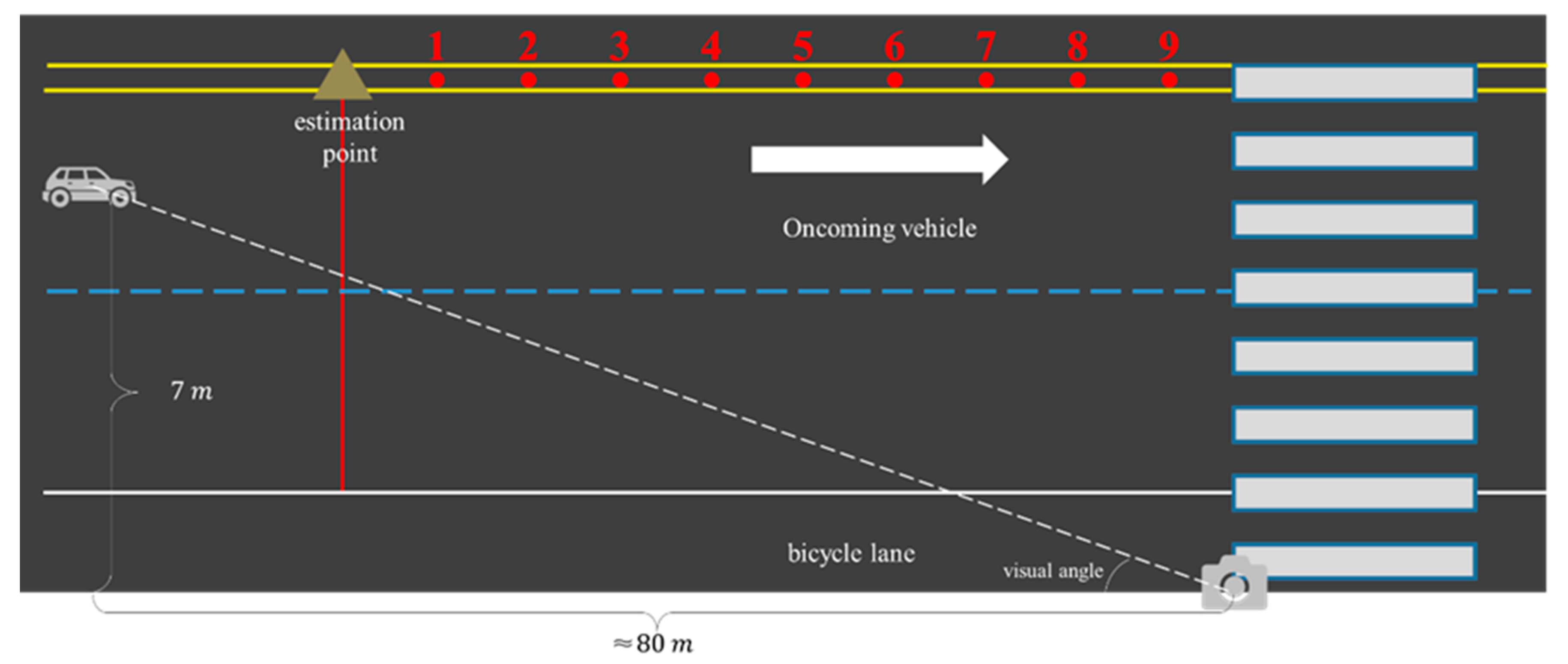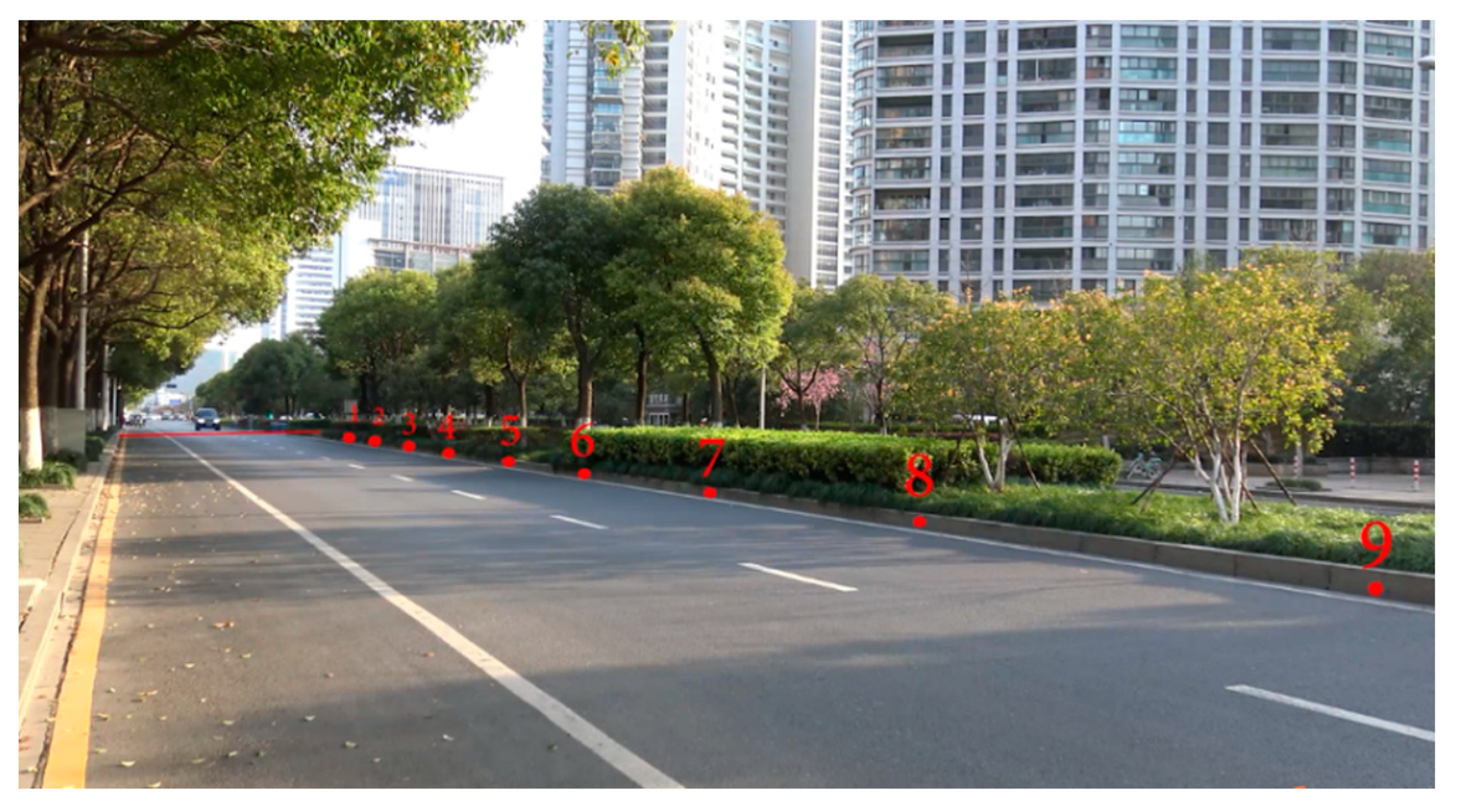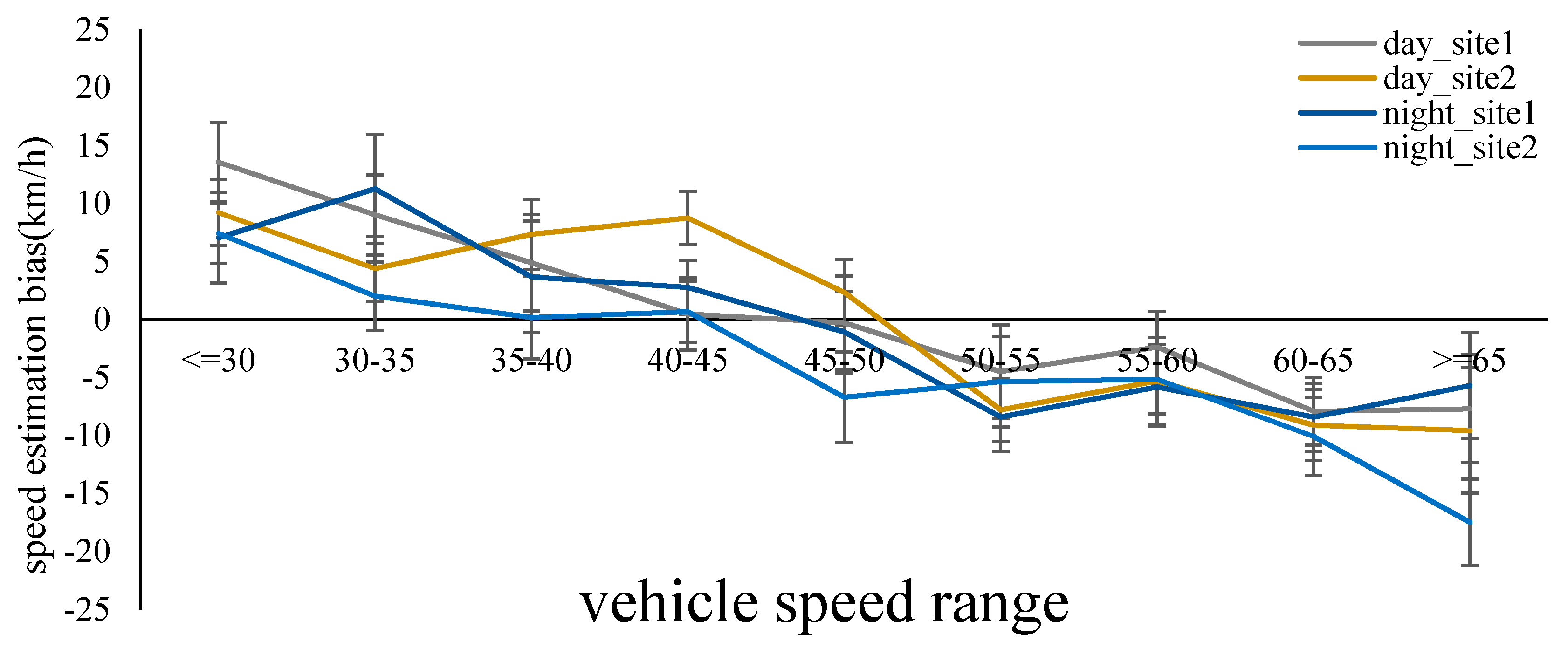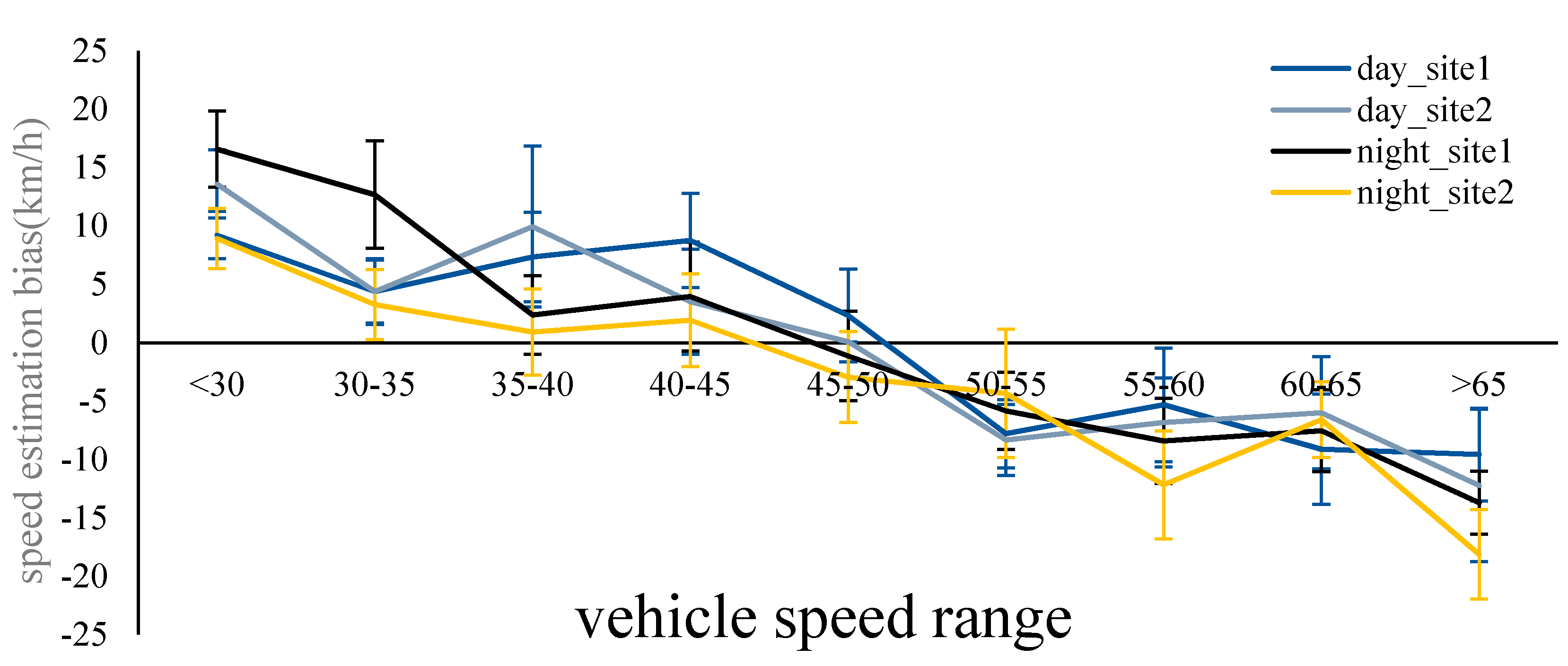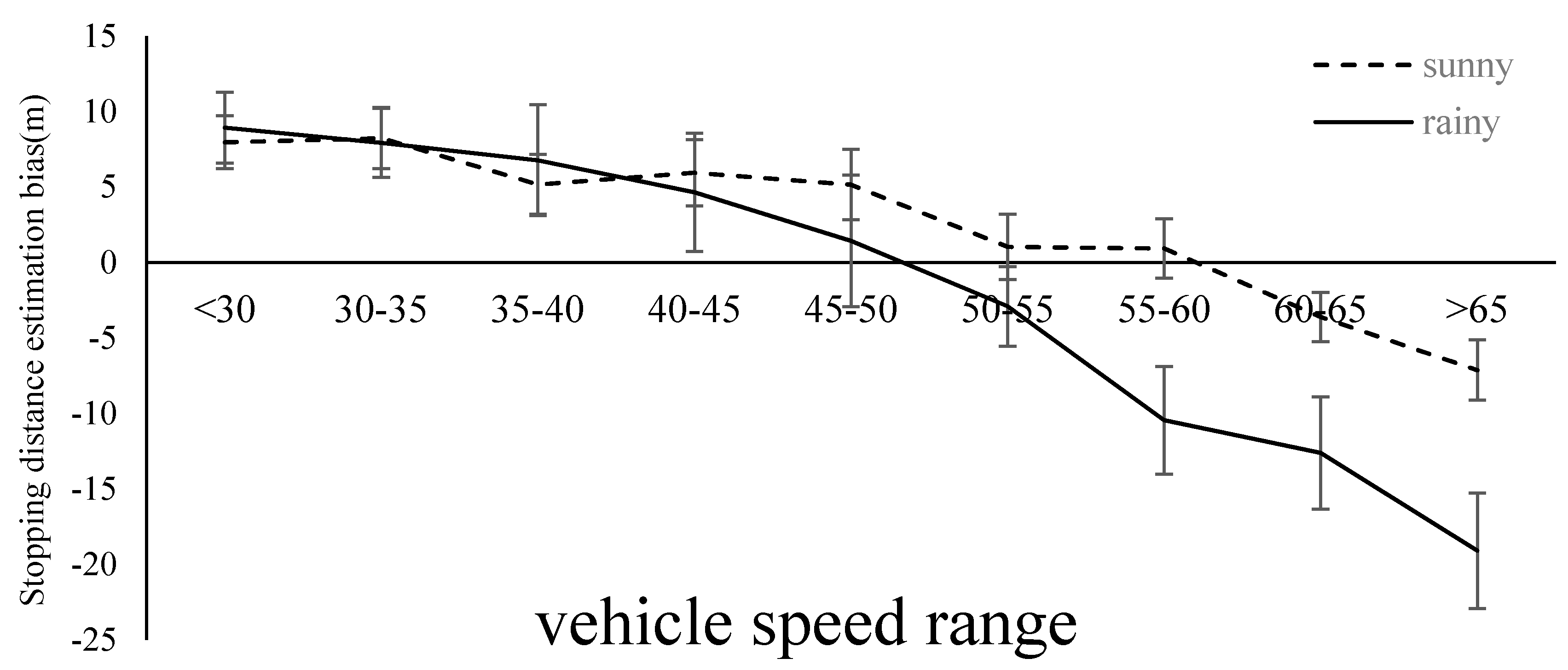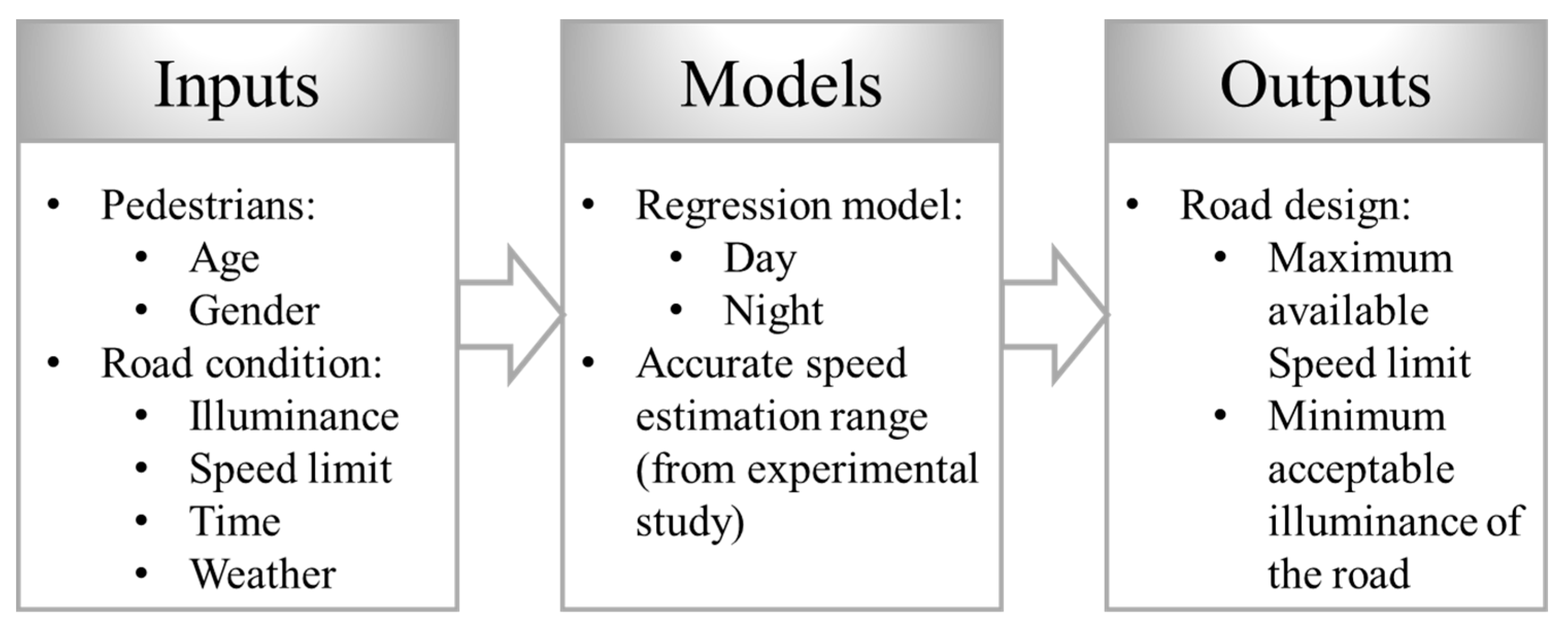1. Introduction
According to a WHO report, approximately 270,000 pedestrians worldwide were killed in 2010, accounting for 22% of the total fatalities resulting from traffic accidents [
1]. In urban China, crossing streets has become a necessary activity as well as an essential skill for all citizens. This normal activity requires that pedestrians make immediate decisions based on approaching vehicles and their own mobility [
2]. This is a highly challenging task for the older people of China, who make up an extremely vulnerable population of pedestrians using the roads [
3,
4]. A report from the Zhejiang Public Security Bureau (a Chinese province) showed that, in 2016, more than 1500 pedestrians over the age of 60 were involved in road-crossing accidents, which accounts for 36.4% of the total number of traffic accidents that year [
5].
Visual, cognitive, and motor abilities, which are known to decline with age, are necessary for the task of crossing the street [
6]. Data further indicate that adults over 60 years of age are more likely to sustain serious injuries than younger adults [
2,
3,
7,
8]. Consistent with this, several studies of road-crossing decisions have concluded that older people make more dangerous decisions, e.g., smaller gap acceptance, shorter time-to-collision estimation, etc., than do younger people, particularly in complex traffic environments [
6,
7,
9,
10,
11,
12,
13,
14,
15] and that these decisions are associated with a decline in physical and cognitive functions [
2,
6,
13,
16,
17].
In studies on pedestrian crossing safety, it has been determined that a vehicle’s approaching speed has a great effect on the selected gaps between pedestrians and approaching vehicles [
11,
18]. In some studies [
17,
19,
20], selecting gaps mainly based on distance increases unsafe crossing decisions when the approaching vehicles are traveling at high speeds because the time available for crossing is overestimated. Moreover, shorter gap distances associated with lower speeds lead older pedestrians to decide not to cross and to miss safe crossing opportunities [
21]. A study further determined that training older pedestrians on speed estimation improves their ability to make more accurate gap-acceptance decisions [
22]. Thus, we hypothesized that the poor ability to estimate the speeds of approaching vehicles may explain why older pedestrians lose road-crossing opportunities at lower vehicle speeds while increasing road-crossing dangers at higher speeds.
However, there remains a lack of research regarding the ability of older pedestrians to correctly assess the speed of approaching vehicles. With respect to younger pedestrians, Troscianko et al. [
23] conducted a study in real traffic in which 10 participants were asked to estimate the speed of the vehicles from an interior site and found that the participants significantly underestimated vehicle speed. Sun et al. [
19] extended the study in a naturalistic traffic environment and explored some environmental factors related to speed and stopping distance estimation. They found that actual speed and weather had an effect on subjective speed and stopping distance estimations. The results also indicated that the pedestrians made estimation errors at different speed ranges and influencing weather factors. Thus, one of the objectives of our study was to explore the speed perception of approaching vehicles by older pedestrians and the degree to which environmental factors impacted speed estimation.
Environmental factors such as time, weather, and illuminance of the road may influence one’s perception of speed. Compared with daytime estimation, the nighttime estimation ability of pedestrians is more important and useful as the poor light at night may cause more traffic accidents [
24,
25,
26,
27]. Furthermore, regarding night conditions, previous studies have indicated that older pedestrians are at greater risk of road-crossing accidents and pay more attention to safety precautions [
28,
29]. Therefore, we offer the following hypothesis:
Hypothesis 1. Under the conditions of night, older pedestrians will be more conservative and less likely to underestimate vehicle speed.
Horswill and Plooy [
30] investigated the effect of reducing image contrast on speed perception in a simulated experiment and found vehicle speeds appear slower in reduced contrast conditions. Under rainy conditions, the heavy gloomy sky and raindrops block the pedestrian’s line of sight [
30], thus reducing the contrast. Therefore, we offer the following hypothesis:
Hypothesis 2. Older pedestrians will perceive the speed of an approaching vehicle as slower under rainy conditions than under sunny ones.
Researchers have found a strong association between traffic accidents and road lighting conditions [
31], but cognitive research conducted in the laboratory indicates that the degree of luminance across a visual scene influences one’s perception of speed (e.g., [
32,
33,
34,
35,
36]). Similar findings were also found under actual driving conditions [
37,
38]. Thus, we offer the following hypothesis:
Hypothesis 3. In conditions of lower illumination at night time, pedestrians will perceive the speed of approaching vehicles to be slower than it actually is, and therefore, they will be more likely to underestimate the vehicle’s speed.
Stopping distance, also called braking distance, is “the amount of travel required to bring the vehicle to a full stop given the current deceleration” [
39]. The ability to accurately estimate a vehicle’s stopping distance is not only important for drivers [
39,
40,
41], but it is also important for pedestrians as they must make safe street-crossing decisions, especially in emergent situations [
19]. Street-crossings based on gap distance are safe in most circumstances. First, pedestrians have already left a buffer in their critical gaps to have a larger safety margin [
42], which means the safety margin is large enough for pedestrians to cross the road safely. Second, pedestrians usually assume that drivers maintain or decrease their speeds upon seeing them. Thus, the available gap becomes sufficiently large enough for the pedestrian to make a safe decision. Nevertheless, in some emergent situations, such as rainy conditions with reduced friction coefficients between the tires and the road, which increases braking distance, if the approaching vehicle is traveling too fast, pedestrians who are determined to cross the street could expend the buffer zone even if the vehicle brakes for them. Therefore, the ability to make safe estimations, i.e., accurate or overestimations, of vehicle stopping distances is also critical. Similar to the speed estimation survey, the following factors are incorporated into the current work to investigate their effects on stopping distance estimation: Weather, time, and illuminance of the road. With respect to stopping distance estimations, we offer the following hypotheses:
Hypothesis 4. Older pedestrians will underestimate the stopping distance of approaching vehicles at night.
Hypothesis 5. Older pedestrians will underestimate the stopping distance of approaching vehicles during rainy conditions.
Hypothesis 6. Older pedestrians will underestimate the stopping distance of approaching vehicles under conditions of lower illumination at night time.
Consequently, a projector-based experiment was conducted to extend the findings of Sun et al. [
19] to older pedestrians and three environmental factors were incorporated into our study, namely, weather, road nighttime illuminance, and context time.
6. Discussion
This study aimed to investigate the ability of older pedestrians to estimate vehicle speed and stopping distance while crossing the street, especially at night, and to determine what factors affect the ability of older pedestrians to accurately estimate speed and stopping distance. This study determined that older pedestrians exhibit varied estimation bias tendencies, see
Table 7.
The underestimation of the speeds and stopping distances of approaching vehicles may lead to unsafe street-crossing decisions. The speed and stopping distance estimation bias generally increased with higher vehicle speeds. Our results indicated that older pedestrians had smaller accurate estimation intervals than did the adults in the Sun et al. study [
19]. This result may partly explain the reason why older pedestrians often make unsafe decisions when vehicles are approaching at high speed and explain why they miss many crossing opportunities when the vehicle speed is low [
2].
Compared with daytime estimations, the estimation ability of older pedestrians under nighttime conditions is more important and useful as the poor lighting at night may cause more traffic accidents [
24,
25,
26,
27]. With respect to both speed and stopping distance estimations, the main effect of the time was significant, indicating that pedestrians lower their speed estimation expectations and are more likely to underestimate the speed and stopping distance of a vehicle at night. Thus,
H1 is supported.
As the underestimation of speed and stopping distance was more severe in rainy conditions,
H2 is rejected.
H2 assumed that the effect of blurred vision on cognition under rainy conditions may cause greater uncertainty [
58], and thus cause pedestrians to be more conservative when estimating the speed of a vehicle. However, in our study, there was no significant difference between sunny and rainy conditions with respect to the perception of speed. This may be due to the between-subject experimental design and the unfamiliarity of the participants with rainy conditions. To avoid the fatigue effect, the weather variable was designed as a between-subject variable. We have counterbalanced as many factors as possible between the two groups, including age, gender, and certain unintended factors that may contribute to the differences. That said, the projector-based setting and the unfamiliarity with the rainy conditions may also have contributed to the differences. For example, the interview before the formal experiment indicated that 20 out of 24 participants cross the street on rainy days less than once a week. Thus, it is not easy for them to imagine rainy conditions based on a 2D visual image. With respect to the stopping distance estimation task, although older pedestrians realized that the approaching vehicle required a longer stopping distance under rainy conditions compared to sunny conditions, the extent of that distance was underestimated, thus supporting
H5. Specifically, older pedestrians underestimated the vehicle stopping distance in rainy conditions even when the speed was 45 km/h.
The illuminance of the roads under night conditions exhibited significant effects on speed and stopping distance estimation tasks. However, contrary to
H3 and
H6, under higher illuminance conditions, older pedestrians are more likely to underestimate the speed and stopping distance. The decline of older persons’ visual abilities in low light conditions combined with the high beams of the vehicles may account for this finding. The reduced visual contrast of the night conditions made it difficult for the older participants to distinguish the vehicle from the surrounding environment [
59], especially when the illuminance was lower. Previous studies that have focused more on recognizing oncoming vehicles have also demonstrated that performances on visual information processing tasks are poorer in low light conditions than in high light conditions [
24,
60,
61]. Moreover, the headlights of the oncoming vehicle made it difficult for pedestrians to detect a vehicle’s real-time position [
59]. Interviews following the experiment supported the findings that older pedestrians had difficulty judging the speed of vehicles in certain cases, such as night conditions with lower illuminance, and accordingly, they overestimated the speed of the vehicle.
Previous studies have concluded that pedestrians make crossing decisions based primarily on the distance rather than the vehicle arrival time or speed [
10,
17,
19]. According to our study, road crossing based primarily on gap distance may increase the underestimating bias due to the increase in vehicle speed. The speed underestimation threshold may be even lower under severe conditions such as rainy nights. Furthermore, the speed ranges of the unsafe stopping distance estimation were considerable in rainy conditions, leading to increased danger, which may partly explain why more accidents occur in rainy conditions [
62,
63,
64,
65]. Thus, the misjudgment of the speed and stopping distance of the approaching vehicle approaching may be two of the key factors responsible for the accident.
Previous study have shown that, from the driver’s perspective, participants with driving experience can accurately estimate the driving speed whereas those without driving experience had greater underestimation [
66]. People with a driving license may be more familiar with the vehicles, leading to being more trained in speed and stopping distance judgment. Because only 1% of the people over 60 have a driving license in China in 2018, none of the participants in this study possessed a license. However, this number is growing rapidly. In future work, comparing older pedestrians with and without a driving license is worthy of study.
The findings have theoretical implications for future works. Previous studies on pedestrian decision making, e.g., gap acceptance [
67] and pedestrian behavior model [
68] have used vehicle speed as the indicator of the pedestrian’s perceived speed. However, in our study, the physical speed of the approaching vehicles and the perceived speed of the pedestrians were quite different. The estimation bias also varied based on different physical situations. Thus, in future works, these models should be updated based on the perceived speed.
The findings also have practical implications for future works. In our study, we developed application models to guide road design and future research aimed at improving pedestrian security. Four models provide references regarding speed limits and lighting conditions in the areas with senior living communities. The current work also offers ideas for developing an apparatus for older pedestrians, such as an application (APP) in handheld mobile devices. For example, by integrating the data from a DSRC (dedicated short-range communications) system that can detect the speed and location of oncoming vehicles, the APP will calculate the safety threshold integrated by the pedestrian’s walking speed, personal estimating ability, distance between the pedestrian and the oncoming vehicle, and other related factors. If the vehicle speeds exceed the safety threshold, a warning will be given to the individual to avoid potential dangers. For example, if an approaching vehicle is 60 km/h on a rainy day, considering the underestimation of speed and stopping distance, a warning signal is sent through his handheld mobile.
There are several limitations in this work that require attention and further investigation. First, the study was conducted using a video projector, and there were subsequent limitations relative to the projector-based experiment. For example, the 3D vision of the vehicle was weakened, specifically with respect to depth perception. It also reduced the perception of other related factors, such as rain, wind, and free view. In addition, the fixed screening angle and height limit the field of view of the participants, which may influence the speed judgment. A VR system could be used in future works to eliminate these factors. Second, because long experiments cause fatigue for older pedestrians, the effect of the side of the road was not counterbalanced. Some investigations suggest that older pedestrians are more likely to be hit on the far side of a two-way street than on the near side [
7,
9,
69]. Finally, speed or stopping distance estimation tasks in our study required the pedestrians to focus only on speed. In a natural traffic environment, interactions between pedestrians and vehicles are more complicated and more frequent. Thus, limited attention was paid to vehicle speed in the road-crossing tasks. Accordingly, future studies should examine the relationship between speed perception and crossing risks.
